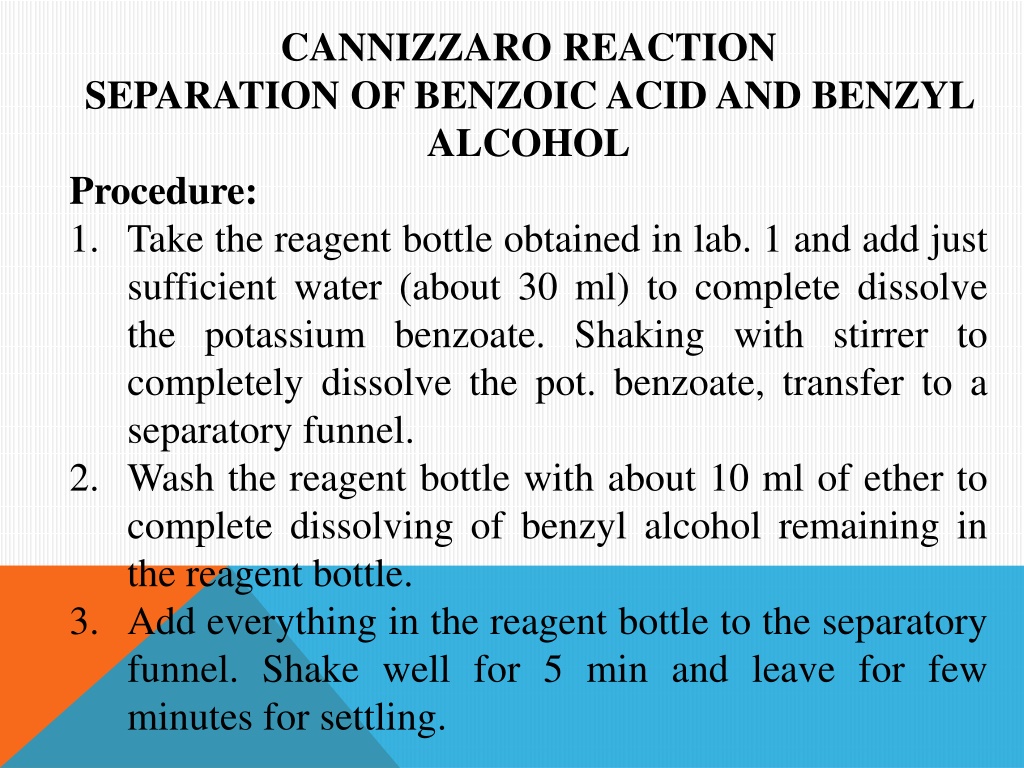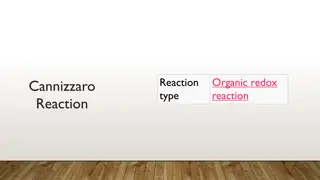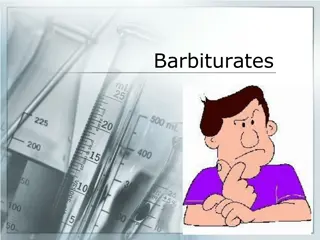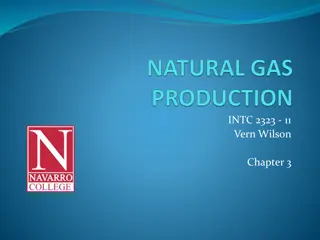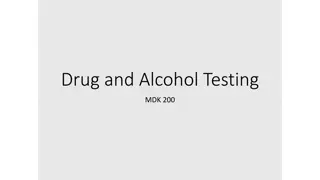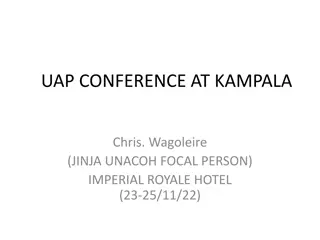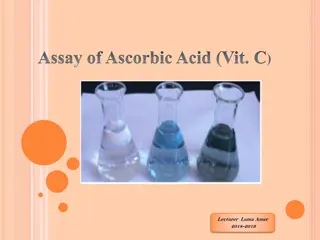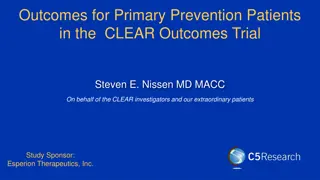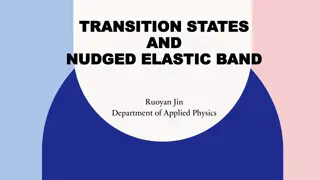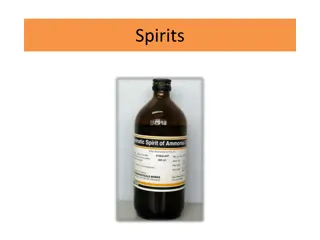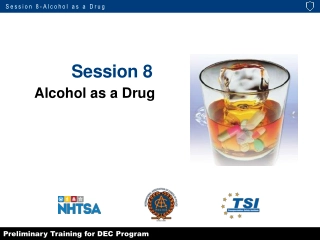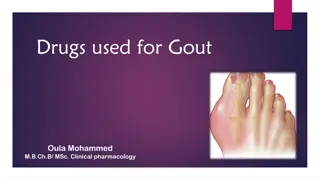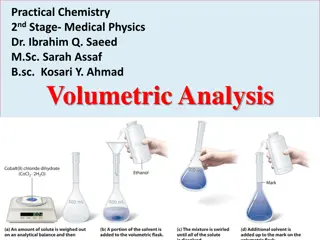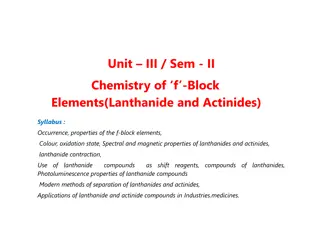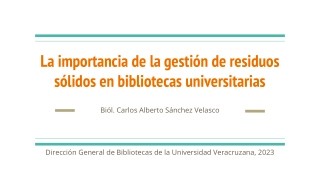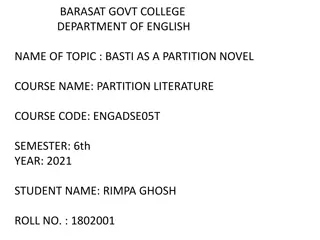Cannizzaro Reaction: Separation of Benzoic Acid and Benzyl Alcohol
The Cannizzaro reaction involves the separation of benzoic acid and benzyl alcohol by utilizing various reagents and procedures such as dissolving potassium benzoate, washing with ether, and treatment with different solutions to isolate the desired compounds. The process involves multiple steps including shaking, washing, filtering, and drying to obtain pure benzoic acid and benzyl alcohol. The goal is to showcase a clear separation of the two components for further use or analysis.
Download Presentation
Please find below an Image/Link to download the presentation.
The content on the website is provided AS IS for your information and personal use only. It may not be sold, licensed, or shared on other websites without obtaining consent from the author. Download presentation by click this link. If you encounter any issues during the download, it is possible that the publisher has removed the file from their server.
Presentation Transcript
CANNIZZARO REACTION SEPARATION OF BENZOIC ACID AND BENZYL ALCOHOL Procedure: 1. Take the reagent bottle obtained in lab. 1 and add just sufficient water (about 30 ml) to complete dissolve the potassium benzoate. Shaking with stirrer to completely dissolve the pot. benzoate, transfer to a separatory funnel. 2. Wash the reagent bottle with about 10 ml of ether to complete dissolving of benzyl alcohol remaining in the reagent bottle. 3. Add everything in the reagent bottle to the separatory funnel. Shake well for 5 min and leave for few minutes for settling.
4. It will be separated into 2 layers: aqueous later which contains benzoic acid as pot. benzoate and ethereal layer which contains benzyl alcohol and unreacted benzaldehyde. 5. Take the ethereal layer and shake twice with 3-ml portions of saturated solutions of sod. bisulfate NaHSO3 to remove any excess or unreacted benzaldehyde. 6. Separate the oily liquid from the aqueous NaHSO3 solution. Wash this oily liquid with 5 ml of 10 % Na2CO3 to ensure complete removal of the bisulfate solution.
7. Wash with 5 ml of water. Separate the oily liquid once more and dry over anhydrous sod. sulfate (or calcium chloride) to absorb any moisture (act as drying agents).There are other compounds used as drying agents as: anhydrous magnesium sulfate MgSO4 or anhydrous pot. carbonate K2CO3. 8. Pour the watery layer into dilute H2SO4 (about 75 ml) and check with litmus paper till convert to red color (acidic solution) leading to formation of white ppt of benzoic acid. 9. Cool and filter the ppt by filter paper to get benzoic acid. Ar-COO-K+ + H2SO4 (dil) Ar-COOH + KHSO4 We prevent excess dilute H2SO4 to avoid dissolving of benzoic acid (like dissolve like).
Reagent bottle (emulsion) Add 30 ml water + 10 ml ether (in separatory funnel). Water Ether Dilute H2SO4 (about 75 ml) (litmus paper) to red Benzyl alcohol + unreacted benzaldehyde NaHSO3 sol Filtrate K2SO4 + H2O Benzoic acid ppt on filter paper Water Ether Na2CO3 + 2NaHSO3 CO2 + H2O + 2NaSO3 to get rid of excess bisulfate Na2CO3 sol Water Ether Water Water Ether The add drying agent (to absorb any moisture) like anhydrous sod. sulfate then distillation to get benzyl alcohol
